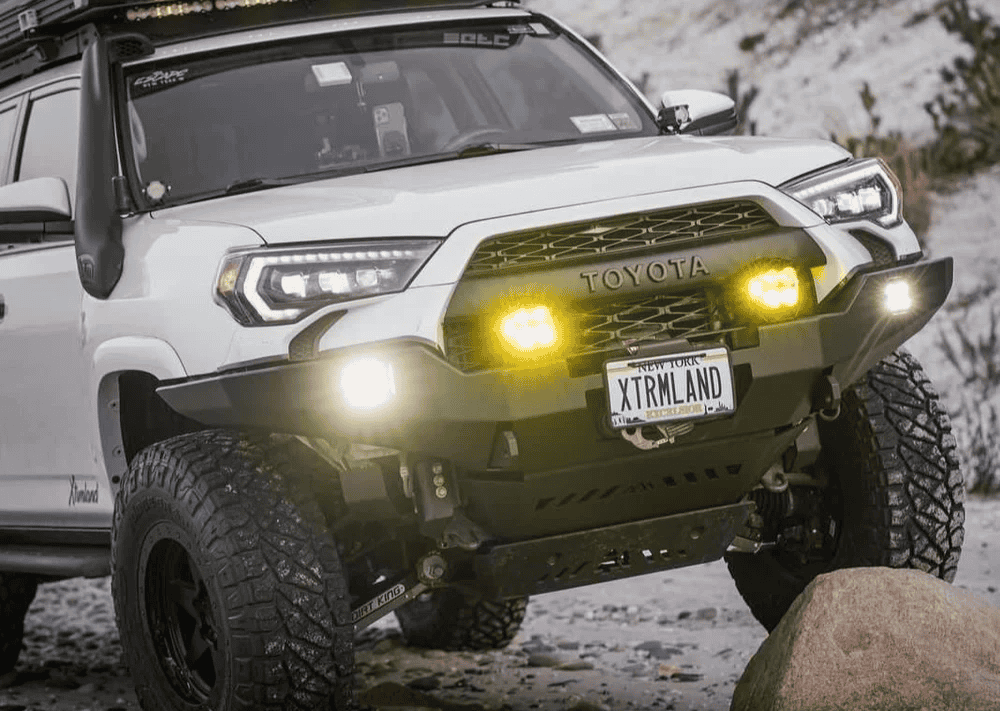Overland Vehicles

A roof tent moves through three worlds of force. First is dynamic load while driving, where wind, bumps, and cornering create shifting side and uplift forces. Second is static load at camp, when sleepers and gear add vertical weight. Third is fatigue from vibration over time, the quiet culprit that loosens fasteners if the interface is not set up correctly.
Mounts transfer these forces from the tent base to crossbars or tracks, then into the roof structure and down to the body. A safe system starts with the foundation. Your vehicle roof style, crossbar rating, spread, and the tent’s bracket design must all align. The best setups treat mounts as a system rather than isolated parts.
Static ratings describe how much weight the parked system can hold. Dynamic ratings define how much force the rack and mounts can manage while moving. Do not assume a high static number covers you on the highway. Use the lower dynamic figure as the governing limit for travel, then leave a comfort margin for gusts, emergency maneuvers, and rough pavement.
Common mount materials include aluminum for light weight and steel for strength and stiffness. Stainless fasteners resist corrosion but can gall without anti seize. Dissimilar metals can cause galvanic corrosion in wet climates, so consider matching metals or using isolators. Powder coat and anodizing help, but the best defense is smart material pairing and regular inspection.
Start by confirming roof architecture. Vehicles may have factory flush rails, raised rails, drip rails, fixed points, or a bare roof that benefits from track installation. Each style sets limits on crossbar placement and attachment strength. Next, check bar shape and rating. Round and aero bars behave differently with clamps, and some tents prefer flat mounting surfaces.
Crossbar spread is the unsung hero of stability. A wider spread reduces pitching and distributes load, but you must stay within the tent maker’s recommended range. Check access for tightening hardware and for ladder clearance when the tent opens. Finally, confirm the tent bracket interface. Many modern bases use slotted channels, while others use fixed holes that demand careful measurement before drilling or committing to a final position.
Clamps should wrap the bar evenly and load the strongest section. Avoid point loading thin edges. If using through bolts into a track or nut plate, verify thread engagement and washer size to spread force. Torque to spec in a cross pattern, then recheck after the first fifty miles and again after a few trips. Paint marker on bolt heads provides a quick visual check for any movement.
A clean install follows a clear sequence and leaves you with a quiet, secure platform that shrugs off weather and washboard roads.
A fairing or small air deflector can calm airflow around the first crossbar. Foam isolators between tent base and bars can damp vibration but should not act as a crutch for poor alignment. If you hear a rattle, stop and diagnose rather than over tightening, which can deform rails or bar extrusions.
Center of gravity too far forward or rearward causes pitching and noise. Correct by shifting the tent a few centimeters within the bracket slots. Under sized washers can crush wood or honeycomb bases; upgrade to larger washers or backing plates. Mixing hardware grades can limit clamp force; keep sets consistent and documented for future service.
Most wind noise comes from misaligned bars, exposed bracket edges, or gaps at the leading edge. Align bars parallel, close gaps where practical, and add a deflector if needed. For security, use lockable bolts or security fasteners on easy to reach outer brackets and park under lighting when possible. Regularly check torque and inspect for any signs of water intrusion or rub marks.
If your roof architecture is complex, or you carry additional loads like solar and recovery gear, a professional layout can prevent headaches. OZK Customs designs mount systems that account for rail strength, crossbar ratings, tent geometry, and airflow, all measured and documented before a single bolt turns. Explore proven platforms on our Overland Rigs page, then see tailored options on our Custom Overland Upfit page. Curious about the craftsmanship and client experience that set us apart? Visit Why Choose OZK Customs to learn more.
We build secure, quiet mounts and integrate them with racks, lighting, and power systems so your rooftop tent feels invisible on the road and rock solid at camp. Tell us where you travel, your roof type, and your payload needs, and we will map the best solution with clear specs, clean wiring, and a handoff that prepares you for the trail.
Want a quiet, secure roof tent setup built to handle real miles and weather? Our team designs and installs proven mounting systems, torque checked and trail tested. Tell us how you travel and we will build the right solution, end to end.
ADDRESS:
6159 E Huntsville Rd, Fayetteville, AR 72701
PHONE:
(479) 326-9200
EMAIL:
info@ozkvans.com